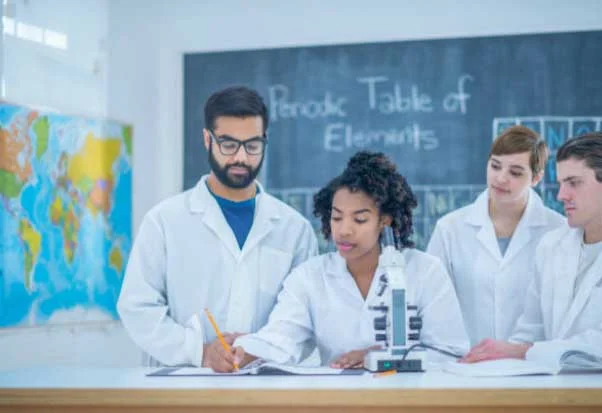Introduction
Welcome to our blog post on the benefits of practical science education! In this article, we will delve into how hands-on learning in the laboratory enhances students’ understanding of scientific concepts. Education is a journey, and we believe that embracing practical, experiential learning can truly transform the way students engage with science.
The Power of Practical Science Education
Practical science education provides students with an invaluable opportunity to apply theories learned in the classroom to real-world situations. This hands-on approach fosters a deeper understanding of scientific principles and cultivates essential skills that can benefit students in various career paths. Let’s explore some of the key benefits associated with practical science education.
1. Enhanced Understanding
When students actively participate in laboratory experiments, they experience science firsthand. This immersive experience not only reinforces theoretical knowledge but also helps students develop a practical understanding of scientific concepts. By manipulating equipment, analyzing data, and troubleshooting experiments, students gain a holistic grasp of the subject matter.
For example, consider a high school chemistry class studying chemical reactions. While reading about these reactions provides a foundational understanding, actually witnessing the transformation of substances and observing the effects of different variables significantly enhances comprehension.
2. Critical Thinking and Problem-Solving Skills
Practical science education encourages students to think critically and develop problem-solving skills. In the laboratory, students face challenges and must devise strategies to overcome them. Whether it’s troubleshooting an experiment gone awry or designing a new approach to test a hypothesis, practical science education nurtures an aptitude for critical thinking.
These skills are transferable to other areas of life, enabling students to approach complex problems with confidence and creativity. The ability to analyze data, identify patterns, and derive meaningful conclusions empowers students to tackle not only scientific challenges but also broader issues they encounter throughout their lives.
3. Collaboration and Teamwork
Practical science education often involves group work, promoting collaboration and teamwork among students. In the laboratory setting, students can share ideas, divide tasks, and collectively analyze results. Through these interactions, students develop communication skills, learn to appreciate diverse perspectives, and build a sense of camaraderie.
By working collaboratively, students also cultivate invaluable skills for their future careers. Many scientific endeavors require teamwork, whether it’s conducting research in a laboratory or collaborating on innovative projects that push the boundaries of scientific knowledge.
4. Long-Term Retention
Studies have shown that practical science education leads to better long-term retention of knowledge. When students actively engage with scientific principles through hands-on experiments, their learning becomes more enduring. The practical application of concepts creates a memorable learning experience, which is retained far beyond the confines of the laboratory.
This retention of knowledge is vital, as it allows students to build upon their understanding of foundational concepts and apply them to more complex scientific problems they encounter in the future.
Incorporating Practical Science Education
Now that we understand the benefits of practical science education, how can we incorporate it effectively? Here are a few key strategies:
1. Proper Lab Facilities
Creating conducive lab environments with modern equipment and safety measures is essential. Well-equipped labs enable students to engage in a wide range of experiments, facilitating active learning and exploration.
2. Curriculum Integration
Integrating practical science education within the curriculum fosters a seamless learning experience. Coordinating theoretical concepts with related laboratory experiments not only reinforces knowledge but also helps students connect the dots between theory and practice.
3. Engaging Experiments
Designing hands-on experiments that pique students’ curiosity and align with the curriculum is crucial. Engaging experiments spark interest, making the learning process enjoyable and inspiring a passion for scientific exploration.
Conclusion
Practical science education is a powerful tool for enriching students’ understanding of scientific concepts. By providing hands-on experiences, encouraging critical thinking, promoting collaboration, and fostering long-term retention, we equip students with the skills needed to thrive in various scientific fields.
Let’s embrace practical science education and create a future where scientific knowledge is shared, ideas are cultivated, and innovation is limitless. Join us on this exciting journey from classroom to lab!

